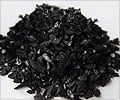With colder temperatures setting in across the United States, an expert at The University of Texas School of Public Health warns Americans to be aware of the dangers that may come with heating their homes.
From fire hazards to carbon monoxide poisoning, there are ways to try to avoid tragedies like the recent one in Aspen, Colorado that left four members of a family dead.Robert Emery, DrPH, associate professor of occupational health and vice president for safety, health, environment and risk management at the university, offers these facts and tips.
Home-Heating Fire Facts
According to the National Fire Protection Association, one in six home fires is caused by heating equipment.
In 2005, heating equipment caused approximately -
• 62,000 home fires
• 670 deaths
• 1,550 injuries
• $900 million in property damage.
Advertisement
Fireplaces used to provide heat without taking adequate steps to make sure they are used safely account for the largest share of home heating fires.
Advertisement
Carbon monoxide is an invisible, odorless, colorless gas created when fuels (such as gasoline, wood, coal, natural gas, propane, oil, and methane) burn incompletely. In the home, heating and cooking equipment that burn fuel are potential sources of carbon monoxide (CO). Generators running indoors can also produce dangerous levels of CO.
The dangers of CO exposure depend on a number of variables, including the victim's health and activity level. Infants, pregnant women, and people with physical conditions that limit their body's ability to use oxygen (i.e. emphysema, asthma, heart disease) can be more severely affected by lower concentrations of CO than healthy adults would be.
In 2005, U.S. fire departments responded to an estimated 61,100 non-fire, carbon monoxide (CO) incidents.
The number of incidents increased 18 percent from 51,700 incidents reported in 2003. This increase is most likely due to the increased use of CO detectors, which alert people to the presence of CO.
Home Heating Safety Tips:-
• Keep anything that can burn at least three feet away from heating equipment, such as the furnace, fireplace or portable heater.
• Only use heating equipment that has the label of a recognized testing laboratory.
• Maintain heating equipment and chimneys by having them cleaned and inspected annually by a qualified professional.
• Turn portable heaters off when leaving the room or going to bed.
• For fuel burning space heaters, always use the proper fuel as specified by the manufacturer.
• Make sure the fireplace has a sturdy screen to prevent sparks from flying into the room and burn only dry, seasoned wood. Allow ashes to cool before disposing in a metal container, which is kept a safe distance from the home.
• Make sure all fuel-burning equipment is vented to the outside to avoid carbon monoxide poisoning.
• Install and maintain carbon monoxide (CO) alarms to avoid the risk of CO poisoning.
• Test smoke alarms at least monthly.
Source-Newswise
LIN








